Description


Molecular Sieve 3A 3-5mm (150kg/drum)
ภาพรวม
น้ำหรือสิ่งสกปรกอื่น ๆ ที่มีอยู่ในก๊าซธรรมชาติสามารถเพิ่มความเสี่ยงต่อความเสียหายของท่อเนื่องจากการกัดกร่อนหรือการสร้างไฮเดรต การอบแห้ง / การคายน้ำของก๊าซธรรมชาติเป็นกระบวนการที่ไอน้ำจะถูกกำจัดออกจากลำธารก๊าซโดยใช้สารดูดความชื้นที่มีประสิทธิภาพสูงเรียกว่าโมเลกุล กระชอนs ประเภทของตะแกรงโมเลกุลที่แตกต่างกันใช้ในอุตสาหกรรมการคายน้ำก๊าซธรรมชาติ กระบวนการอบแห้งนี้ใช้วัสดุดูดความชื้นแบบ 3A, 4A และ 5A ซึ่งขึ้นอยู่กับขนาดของโมเลกุลขนาดรูพรุนและความขั้วของกระแสก๊าซ มีความแตกต่างกันเล็กน้อยในความเข้มข้นของไอน้ำและอัตราการไหลของก๊าซตามขนาดของรูพรุน
ก๊าซธรรมชาติที่มีไอน้ำและสารปนเปื้อนอื่น ๆ จะถูกส่งผ่านคอลัมน์ตะแกรงโมเลกุล ด้วยความสามารถในการดูดซับความสามารถในการดูดซับน้ำจะไหลออกจากลำธารก๊าซไปยังความเข้มข้นต่ำ สามารถดูดซับตัวดูดซับดังกล่าวได้ที่อุณหภูมิเฉพาะขึ้นอยู่กับชนิดของสารดูดซับที่ใช้ในกระบวนการอบแห้ง / การคายน้ำของก๊าซธรรมชาติ ตะแกรงโมเลกุลถือเป็นสารดูดความชื้นและตัวดูดซับที่มีประสิทธิภาพมากที่สุดสำหรับการอบแห้งก๊าซธรรมชาติกับโมเลกุลที่เหมาะสมของเส้นผ่าศูนย์กลางรูขุมขนที่สำคัญ
สูตรเคมี:
2 / 3K2O * 1 / 3Na2O * * * * * * * * Al2O3 2SiO2 * 9 / 2H2O
Molecular Sieve 3A
Molecular Sieve 3A is an alkali metal aluminosilicate; it is the potassium form of the Type A crystal structure. Type 3A has an effective pore opening of about 3 angstroms (0.3nm). It adsorbs molecules with effective diameters smaller than approximately 3 angstroms, but excludes molecules such as unsaturated hydrocarbons.
Technical Specification
| Property | Unit | Bead (1.6-2.5 mm) | Bead (3-5 mm) | Pellet (1/16”) | Pellet (1/8”) | Note |
|---|---|---|---|---|---|---|
| Diameter | mm | 1.6-2.5 | 3-5 | 1/16” | 1/8” | – |
| Static Water Adsorption | %wt | ≥21.5 | ≥21.5 | ≥20 | ≥20 | RH50%, 25°C |
| Bulk Density | g/ml | ≥0.74 | ≥0.74 | ≥0.65 | ≥0.65 | Tapped |
| Loss on Ignition | %wt | ≤1.50 | ≤1.50 | ≤1.50 | ≤1.50 | 575°C, 1hr |
| Loss on Attrition | %wt | ≤0.10 | ≤0.10 | ≤0.30 | ≤0.30 | – |
| Crush Strength | N | ≥30 | ≥80 | ≥30 | ≥70 | Avg. 25 beads |
| Particle Ratio | % | ≥97 | ≥99 | – | – | – |
Recommended Application
- Drying of unsaturated hydrocarbons (e.g., ethylene, propylene, butadiene).
- Cracked Gas Drying.
- Drying of natural gas, if COS minimization is essential, or a minimum co-adsorption of hydrocarbons is required.
- Drying of highly polar compounds, such as methanol and ethanol.
- Static (non-regenerative) dehydration of insulating glass units, whether air-filled or gas-filled.
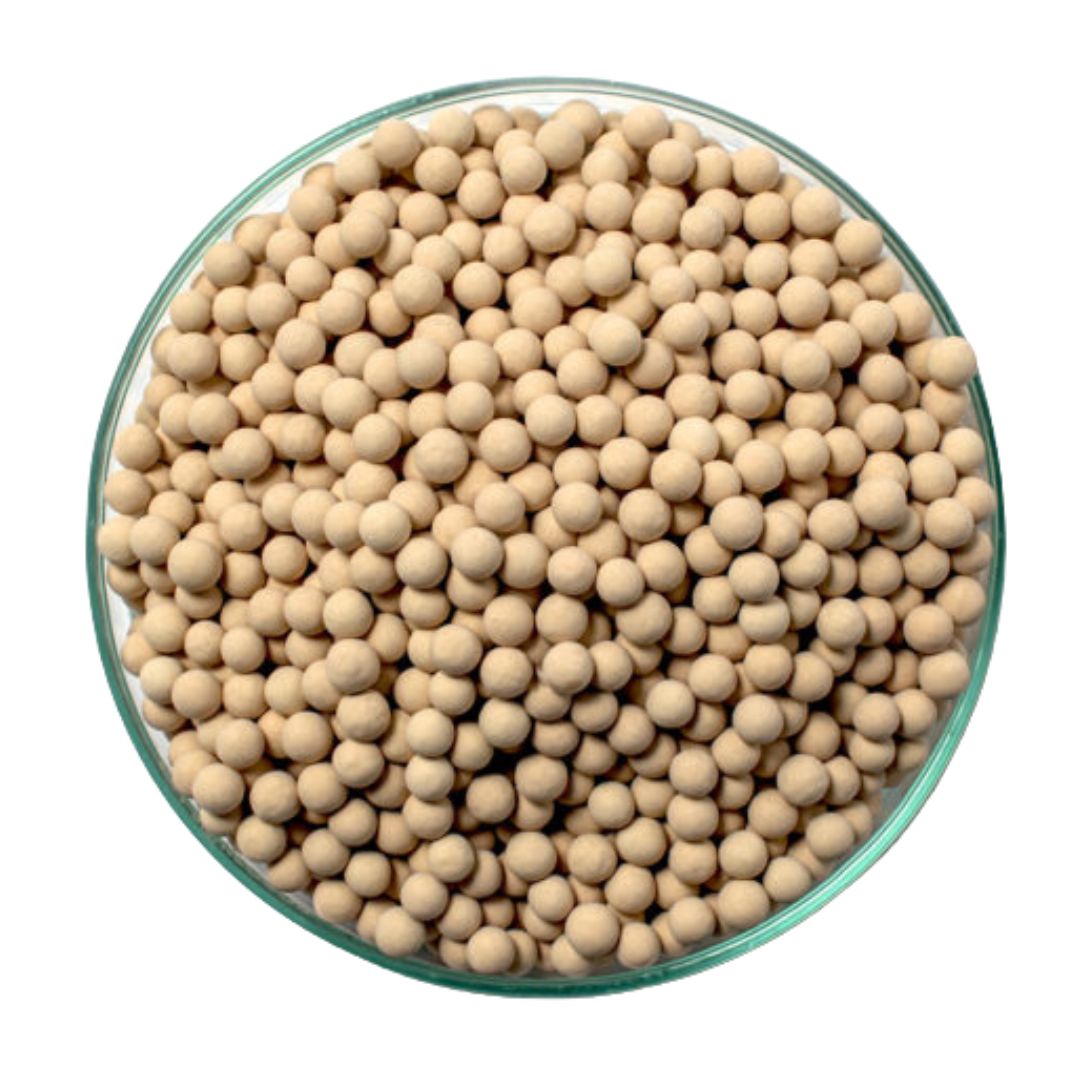
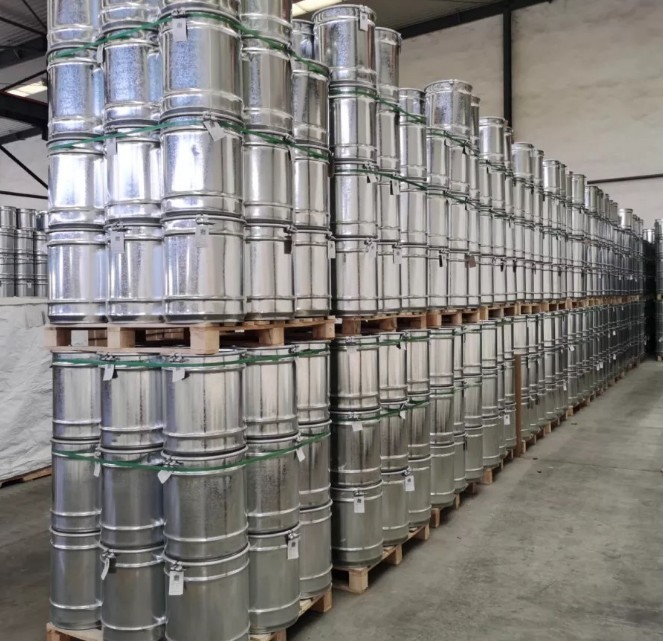
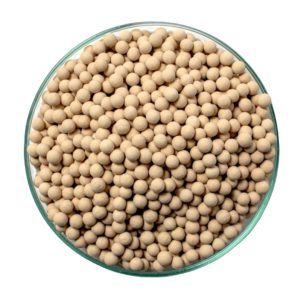
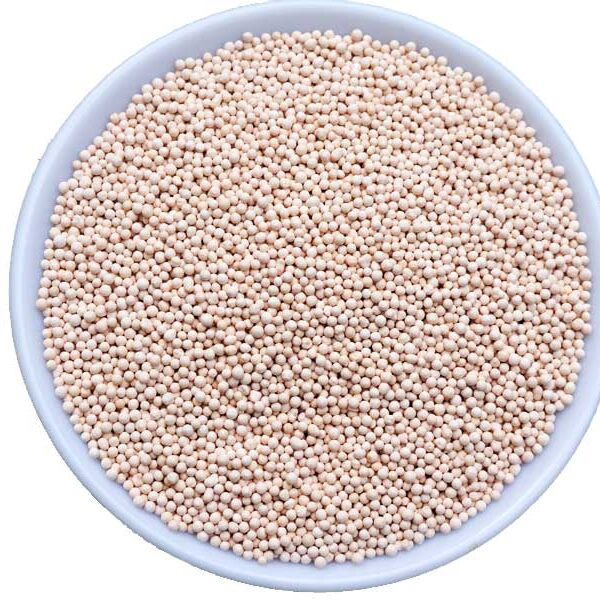
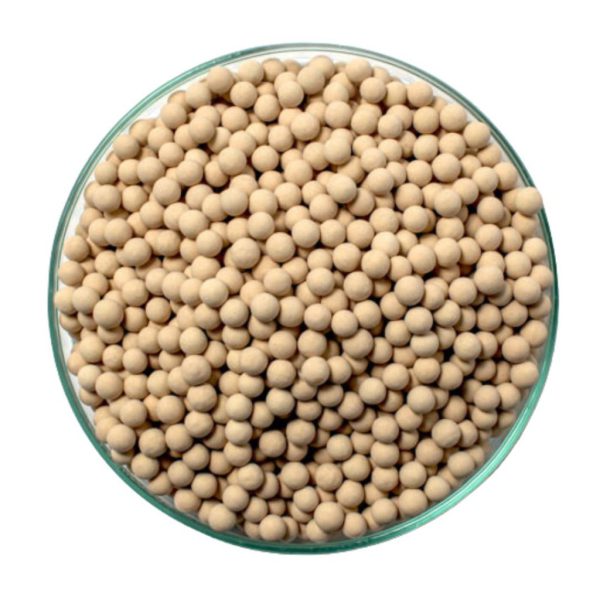
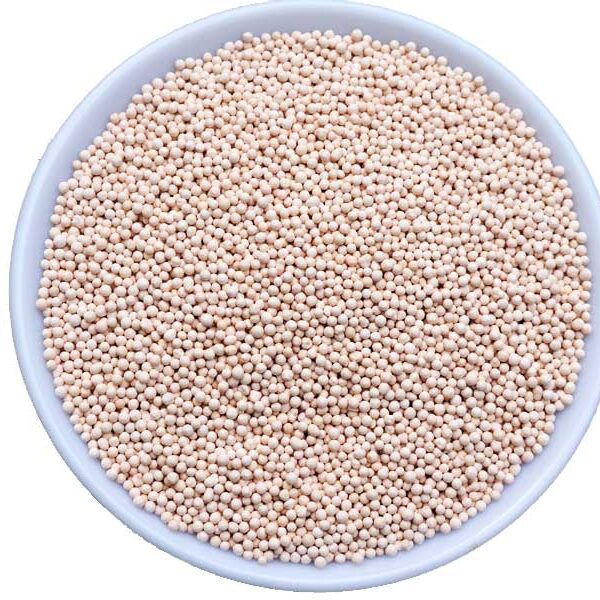
Reviews
There are no reviews yet.